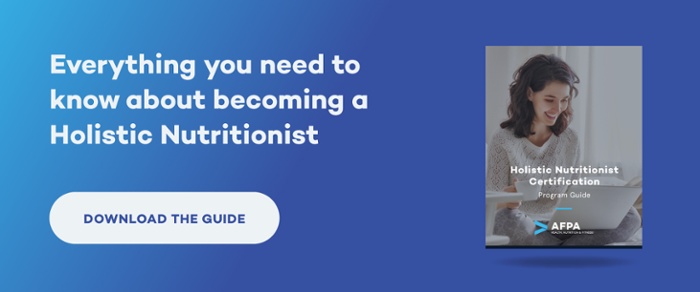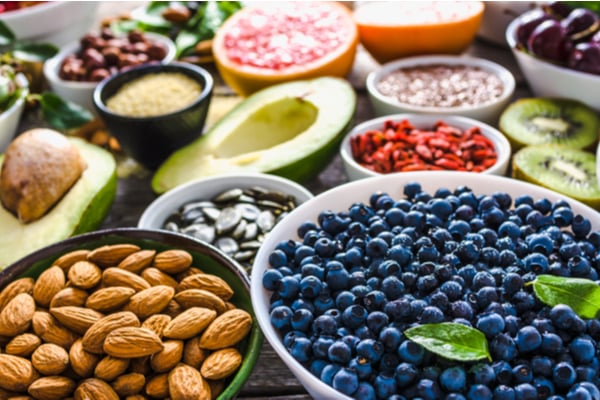The ketogenic diet is catching attention across the country, but there’s a lot of confusion about what it can deliver. In our previous article on the history of the keto diet, we walked you through the origins of this eating plan and disclosed the diet’s early use as a treatment for epilepsy. In this article, we’ll dive deeper into the details behind entering ketosis so that you have a better understanding of its health benefits and how you can follow it. By the end, we hope to answer the questions, “what is the keto diet and how does it work?’ so you’ll be one step closer to understanding whether entering ketosis is right for you.
How Does the Ketogenic Diet Work?
The ketogenic diet is a low-carb, high-fat eating strategy that stimulates your body to burn fat for energy instead of carbohydrates (glucose). This eating strategy has many similarities to the Atkins plan, but the ratios of fats to protein that you eat are different.
Glucose is your body’s primary energy source. Any that your body doesn’t burn is converted into fat and stored in your tissues. When your levels get low, your brain triggers cravings for sweets and chips for a quick energy boost, meaning that this stored glucose is rarely called into action.
By following the ketogenic diet, you can drastically reduce your carbohydrate intake and replace those calories with extra fat. When glucose isn’t available, the liver converts your stored fat into acids known as ketone bodies that can power the body (especially the brain) instead. Notably, your system will only produce ketones if you severely limit your carb and protein consumption, as both will otherwise be converted into glucose
When you make the shift from burning glucose to ketone bodies, you’ve officially entered ketosis. The increase in fat burning makes it easier to use your fat stores. While the primary benefit of this process is shedding excess weight, entering ketosis can also reduce your appetite, improve your energy supply, and leave you feeling alert and focused. While, fasting will also put you in ketosis, it’s not a long-term solution because you can’t forgo eating forever. For this reason, many people prefer to eat a ketogenic diet so that they can stay in ketosis for more extended periods of time.
* The information on this site is informative in nature and should never be construed or interpreted as a substitute for medical advice. No information on this site is intended to be instructional and should not be considered or used as medical diagnosis or treatment.
Each person is different, and the way your body responds to a particular diet may be significantly different from the way other people respond. You should speak with your physician or healthcare professional before starting any diet or exercise program.
Become a Certified Holistic Nutritionist Online in 6 Months or Less
Who Should Consider the Keto Diet?
Starving your body of carbohydrates can have profound effects on your health, but does it make sense for your situation? The ketogenic diet might be beneficial for anyone with the following wellness goals. (We should mention – consult with your physician
Those Who Want to Lose Weight
Many people follow the ketogenic diet to shed extra pounds, and for a good reason. Almost two dozen studies reveal that entering ketosis can help you lose weight, and further research reports that the diet’s results are superior to following a low-fat diet. According to one study, participants on a ketogenic diet lost 2.2 times more weight than those who followed a low-fat approach, and their cholesterol levels improved as well. Part of the plan’s success comes because it keeps participants full between meals without requiring them to count calories
Those with Diabetes
Diabetes is a chronic lifestyle disease that affects an estimated 100 million Americans, but following a ketogenic diet might help you keep the condition under control. Because the eating plan enables you to shed extra fat, it lowers your risk of developing prediabetes and metabolic syndrome. Likewise, some reports show that the diet can improve insulin sensitivity by almost 75%. If you’re eager to live without diabetes medication, going keto might help. One report found that a third of people with diabetes who followed the ketogenic diet could stop taking all of their medicine, and 95% percent were able to reduce their dosage.
Those Who Want Better Appetite Control
A primary appeal of the ketogenic diet is that it keeps you feeling full between meals. This is because the eating strategy focuses on filling meals with fats and proteins, and it primes your system to continuously fuel itself on fat. It’s common for followers of the ketogenic diet to eat just two meals a day, and to skip snacking without feeling deprived. This makes the eating strategy an effective way to fight the symptoms of sugar addiction, and some people with eating disorders like bulimia also find it beneficial.
Those Who Want an Energy Boost
Entering ketosis provides your brain with a near-constant supply of energy, which helps you avoid mental fatigue while boosting your focus and concentration. Likewise, the diet can lead to better energy levels, as it prevents you from suffering from spikes and dips in your blood sugar.
Those Seeking Greater Physical Endurance
Stored carbohydrates (known as glycogen) can only provide your body with a few hours of energy. Your fat stores, in contrast, contain enough energy to power you for weeks, even months. Putting your body into ketosis helps you tap that energy supply to boost your physical endurance.
Those with Epilepsy
The ketogenic diet was first established as a medical treatment for children with epilepsy, and the results are often still comparable to conventional anti-epileptic drugs. Reports show that following the eating strategy can significantly reduce the frequency and severity of seizures, sometimes permanently.
{{cta(‘8c7c8cff-00e5-4cb0-844a-5352a5b5029f’)}}
Who Should NOT Go Keto?
Though the ketogenic diet has proven benefits for much of the population, the eating plan isn’t recommended for everyone. Specifically, those taking insulin for type 1 diabetes, have high blood pressure, or are pregnant or breastfeeding are at high risk of ketoacidosis from following the ketogenic diet. This is a dangerous health condition that is caused by an excessive buildup of ketones in the body, and it can lead to nausea, high blood sugar levels, extreme thirst, and debilitating fatigue. If you fit these perimeters, it’s best to stay on a modified low-carb diet to ensure your blood sugar levels don’t dip too low.
Different Types of Ketogenic Diets
Since the ketogenic diet’s start in the 1920s, people have experimented with numerous modifications of the original method. The variation that makes the most sense for you depends on your baseline health, how quickly you want results, and whether you can commit to a strict diet.
Several popular versions of the ketogenic diet include the following:
- Standard Ketogenic Diet (SKD): This traditional approach for entering ketosis requires you to follow strict ratios of 75% fat, 20% protein, and just 5% carbohydrates each day.
- Carb Cycling: For those who find it hard to continually restrict their carb levels, carb cycling lets you alternate your consumption based on the day for easier long-term maintenance. This plan works well for athletes who would otherwise struggle to take in enough calories.
- High-protein ketogenic diet: This eating strategy almost doubles your protein consumption to 35% of your daily intake, while keeping carb consumption at 5%.
- Modified Keto Diet: Many people find it difficult to fill up on fat, so the modified ketogenic diet lets you boost your carbohydrate intake up to 30% each day.
As a rule, the fewer carbs you eat, the more effective the diet will be for weight loss and satiety. While each of these diets can be a viable option for improving your health, it’s important to note that only the standard and high-protein diet have undergone rigorous study. While variations of these two plans are likely to still be beneficial, their impacts on your health are less well known.
What Can You Eat on a Ketogenic Diet?
The basic strategy for following the standard ketogenic diet is to limit your carb consumption to between 20 and 50 grams. This means that there are strict guidelines about which foods are allowed and which need to be avoided.
Foods to Avoid
When your goal is entering ketosis, you need to avoid all sugary or starchy foods. Examples of the foods to avoid include the following.
- Sweetened Beverages: soda, fruit juice, smoothies
- All Desserts: cake, ice cream, candy, chocolate, pie
- Grains and Starches: rice, pasta, cereals
- Root Vegetables: potatoes, sweet potatoes, parsnips, carrots
- All fruit (small portions of berries are allowed)
- Beans and Legumes: peas, lentils, chickpeas, kidney beans
- All Low-Fat or Diet Products (manufacturers overcompensate for flavor loss with added sugars)
- Most Sauces and Condiments
- Alcohol (red wine is permitted on occasion)
Food to Eat
The list of off-limits foods might seem long, but there are plenty of foods permitted on the ketogenic diet. The foods you can fill up on include the following:
- Unprocessed Meats: Organic, grass-fed cuts are best.
- Seafood: Wild-caught fatty fish like salmon, trout, tuna, and anchovies are best (but avoid the breading).
- Eggs: Organic, pasture-raised eggs are ideal.
- High-Fat Cooking Sauces: Butter, coconut fat, and olive oil should be added to most dishes to keep your fat content high.
- Vegetables that Grow Above Ground: Leafy greens, cauliflower, cabbage, broccoli, zucchini, and avocado are smart choices. Consider soaking them in olive oil or coconut oil for a high-fat content
- High-Fat Dairy: Butter, high-fat cheese, heavy cream (milk and yogurt should be avoided because of the high sugar content).
- Nuts and Seeds: Almonds, walnuts, flax seeds, pumpkin seeds, and chia seeds are recommended in moderation, though cashews should be limited due to their carbohydrate content
- Berries: Fresh or frozen berries are permitted in moderation, especially when paired with high-fat whipping cream.
Regarding beverages, plain water or unsweetened coffee and tea are idea options, though full-fat milk can be added in small amounts. A staple drink of the ketogenic diet is bulletproof coffee, which is a brew made from grass-fed butter, coconut oil, MCT oil, or other full-fat substances.
Up Next: Is the Ketogenic Diet Healthy?
Following the ketogenic diet takes a commitment to transform how you approach food, but is it worth following in the long run? In our next article, we’ll dive into expert opinions for the ketogenic diet (as well as its potential side effects) to help you make an informed decision about whether the eating strategy is right for you.
Sources:




